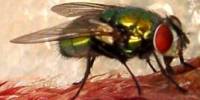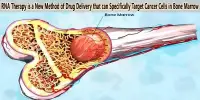What is Klinefelter syndrome?
Klinefelter syndrome is a genetic disorder that affects males. Klinefelter syndrome occurs when a boy is born with one or more extra X chromosomes. Most males have one Y and one X chromosome. Having extra X chromosomes can cause a male to have some physical traits unusual for males.
It is a chromosomal condition that affects male sexual development. Males with this condition typically have small testes that do not produce enough testosterone, which is the hormone that directs male sexual development before birth and during puberty. A shortage of testosterone during puberty can lead to breast enlargement (gynecomastia), reduced facial and body hair, and an inability to father children (infertility).

Other names for Klinefelter syndrome:
- Klinefelter’s Syndrome
- 47,XXY
- XXY syndrome
- XXY trisomy
Pathophysiology:
The X chromosome carries genes that play roles in many body systems, including testis function, brain development, and growth.The addition of more than one extra X or Y chromosome to a male karyotype results in variable physical and cognitive abnormalities. In general, the extent of phenotypic abnormalities, including mental retardation, is directly related to the number of supernumerary X chromosomes. As the number of X chromosomes increases, somatic and cognitive development are more likely to be affected.

Genetic causes:
Klinefelter’s syndrome is caused by an extra X chromosome and affects only males. An infant with Kleinnfelter’s Syndrome appears normal at birth, but the defect usually becomes apparent in puberty when secondary sexual characteristics fail to develop, and testicular changes occur that eventually result in infertility in the majority of those affected.
But it can also occur when the genetic material in the sperm splits unevenly.

Signs and syndromes:
Some of the symptoms are-
- Small penis
- Small firm testicles
- Diminished pubic
- Axillary
- Reduced facial and body hair.
- Infertility
- Sexual dysfunction
- Enlarged breast tissue
- Tall stature
- Abnormal body proportions (long legs, short trunk),
- Learning disabilities,
- Personality impairment,
- A single crease in the palm.

What are the genetic changes related to Klinefeltersyndrome?
Klinefelter syndrome is a condition related to the X chromosome and Y chromosome (the sex chromosomes). People typically have two sex chromosomes in each cell: females have two X chromosomes (46,XX), and males have one X and one Y chromosome (46,XY). Most often, Klinefelter syndrome results from the presence of a single extra copy of the X chromosome in each of a male’s cells (47,XXY). Extra copies of genes on the X chromosome interfere with male sexual development, preventing the testes from functioning normally and reducing the levels of testosterone.Some males with Klinefelter syndrome have the extra X chromosome in only some of their cells; in these individuals, the condition is described as mosaic Klinefelter syndrome.

Treatment for Klinefelter syndrome :
- Androgen therapy
- Speech and behavioral therapy
- Treatment for infertility
- Physical and occupational therapy

Other treatment for Klinefelter syndrome may include:
Testosterone replacement therapy: Males with Klinefelter syndrome don’t produce enough of the male hormone testosterone, and this can have lifelong effects. Starting at the time of the usual onset of puberty, testosterone replacement can help treat or prevent a number of problems. Testosterone may be given as injections or with a gel or patch on the skin. Testosterone replacement therapy allows a boy to undergo the body changes that normally occur at puberty, such as developing a deeper voice, growing facial and body hair, and increasing muscle mass and penis size. Testosterone therapy also can help reduce growth of breast tissue, improve bone density and reduce the risk of fractures. It will not result in testicle enlargement or improve infertility.
Breast tissue removal: In males who develop enlarged breasts (gynecomastia), excess breast tissue can be removed by a plastic surgeon, leaving a normal-looking chest.
Speech and physical therapy: These treatments can help boys with Klinefelter syndrome overcome problems with speech, language and muscle weakness.
Educational support: Some boys with Klinefelter syndrome have trouble learning and can benefit from extra assistance. Talk to your child’s teacher, school counselor or school nurse about what kind of support might help.
Fertility treatment: Most men with Klinefelter syndrome are unable to father children, because no sperm are produced in the testicles. Some men with Klinefelter syndrome may have some minimal sperm production. One option that may benefit these men is a procedure called intra-cytoplasmic sperm injection (ICSI), in which sperm is removed from the testicle with a biopsy needle and injected directly into the egg. Other alternatives for having children include adoption and artificial insemination with donor sperm.
Psychological counseling: Having Klinefelter syndrome can be a challenge, especially during puberty and young adulthood. For men with the condition, coping with infertility can be difficult. A family therapist, counselor or psychologist can help you work through emotional issues.
Medical Complications of Klinefelter Syndrome:
Some of the medical complications from Klinefelter Syndrome are:
- An increased risk of developing breast cancer,
- Pulmonary disease,
- Varicose veins,
- Osteoporosis,
- Aicardi syndrome, and
- Lung disease.
Can Klinefelter syndrome be inherited?
This condition is not inherited; it usually occurs as a random event during the formation of reproductive cells (eggs and sperm). An error in cell division called non-disjunction results in a reproductive cell with an abnormal number of chromosomes.

References
- ^ Cotran, Ramzi S.; Kumar, Vinay; Fausto, Nelson; Nelso Fausto; Robbins, Stanley L.; Abbas, Abul K. (2005). Robbins and Cotran pathologic basis of disease. St. Louis, Mo: Elsevier Saunders. pp. 179. ISBN 0-7216-0187-1.
- ^ Bock, Robert (August 1993). “Understanding Klinefelter Syndrome: A Guide for XXY Males and their Families”. NIH Pub. No. 93-3202. Office of Research Reporting, NICHD. Retrieved 2007-04-07.
- ^ a b The Focus Foundation. X & Y Variations. thefocusfoundation.org
















